When to Plant Oregano
Oregano, with its delightful aroma and versatile flavor, is a must-have herb for any kitchen or garden. Whether you’re a seasoned gardener or a novice plant enthusiast, this comprehensive guide will unlock the secrets to successfully growing oregano. From understanding the ideal planting times to troubleshooting common problems, we’ll help you nurture your herb garden to its fullest potential.
A Brief History of Oregano
Oregano has a rich history dating back thousands of years. It was originally cultivated in the Mediterranean region and has been used for centuries in cooking, medicine, and even spiritual rituals. The ancient Greeks and Romans revered oregano for its medicinal properties and as a symbol of joy and happiness.
Oregano Varieties and Their Characteristics
Today, there are several oregano varieties available, each with its own unique characteristics. Common varieties include Greek oregano, Italian oregano, and Mexican oregano. Greek oregano is known for its robust flavor, while Italian oregano is milder and sweeter. Mexican oregano has a distinct citrusy taste. Understanding the differences between these varieties will help you choose the right one for your needs.
Culinary and Medicinal Uses of Oregano
Oregano is a staple in Mediterranean and Italian cuisine, adding depth and flavor to dishes such as pasta sauces, pizzas, and marinades. It pairs well with tomatoes, garlic, and olive oil. Besides its culinary uses, oregano has also been recognized for its medicinal properties. It contains compounds with antimicrobial, antioxidant, and anti-inflammatory properties, making it a valuable addition to natural remedies and herbal medicine.
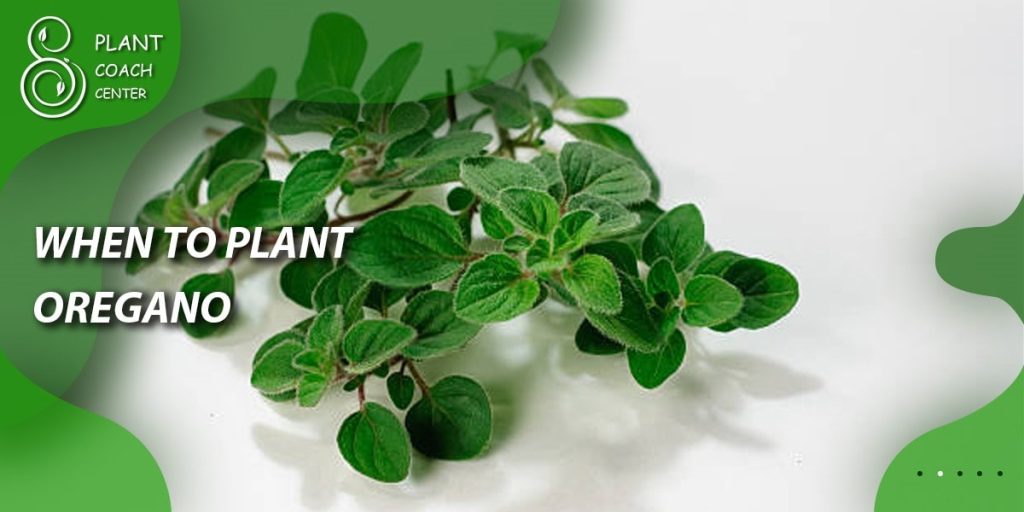
The Right Time: When to Plant Oregano
Timing is crucial when it comes to planting oregano. The best time to plant oregano is in the spring when the soil has warmed up. Oregano thrives in warm weather and needs sufficient time to establish its roots before the heat of summer arrives.
Oregano can be grown both indoors and outdoors, depending on your preferences and climate. Indoor cultivation allows you to enjoy fresh oregano year-round, while outdoor planting provides the plant with natural sunlight and airflow. Consider the advantages and requirements of each option before deciding.
Different regions have varying climates and growing conditions. It’s essential to understand your specific region’s climate and adapt your planting schedule accordingly. Oregano generally prefers full sun and well-drained soil, but it can adapt to a range of conditions.
Soil temperature plays a crucial role in the success of oregano planting. The soil should be at least 60°F (15°C) before you sow the seeds or transplant oregano seedlings. Cold soil can slow down growth and make the plant susceptible to diseases.
Preparing to Plant
Choosing the Right Location
Select a location that receives full sun for at least six hours a day. Oregano thrives in direct sunlight, which helps enhance its flavor and aroma. Ensure the chosen spot has well-draining soil to prevent waterlogged roots.
Soil Preparation and Fertilization
Prepare the soil by removing any weeds or debris and loosening it with a garden fork. Oregano prefers well-draining soil with a pH between 6.0 and 8.0. If your soil is heavy or clay-like, consider adding organic matter or sand to improve drainage. Fertilize the soil with a balanced organic fertilizer before planting to provide essential nutrients.
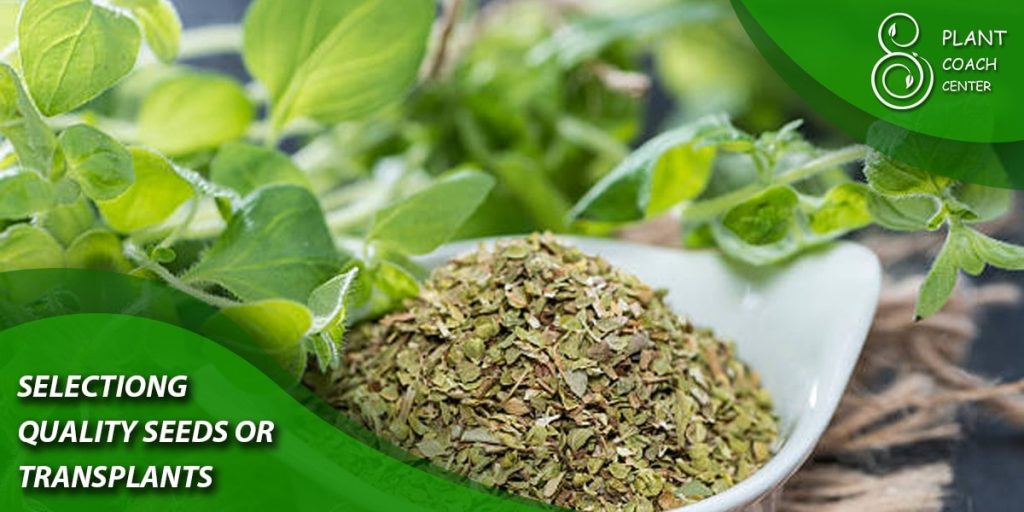
Selecting Quality Seeds or Transplants
Choose high-quality oregano seeds or healthy young transplants from a reputable source. If starting from seeds, follow the instructions on the seed packet for proper germination. Transplants can be purchased from local nurseries or started indoors and later transferred to the garden.
Planting Process
Step by Step Guide to Planting Oregano
- Dig holes or prepare rows in the prepared soil, spacing them about 12 to 18 inches apart.
- Place the oregano seedlings or seeds in the holes at the same depth they were previously growing.
- Gently fill the holes with soil and pat it down to ensure good soil-to-root contact.
- Water the newly planted oregano thoroughly.
Watering Schedule and Techniques
Oregano prefers drier soil, so it’s best to water thoroughly but infrequently. Allow the soil to dry out between waterings to prevent overwatering, which can lead to root rot. Once established, oregano is relatively drought-tolerant and requires minimal watering.
The Role of Sunlight in Oregano Growth
Sunlight is crucial for oregano’s growth and flavor development. Ensure that your oregano plants receive at least six hours of direct sunlight each day. If growing indoors, place the plants near a sunny window or use grow lights to provide sufficient light.
Common Challenges in Oregano Planting
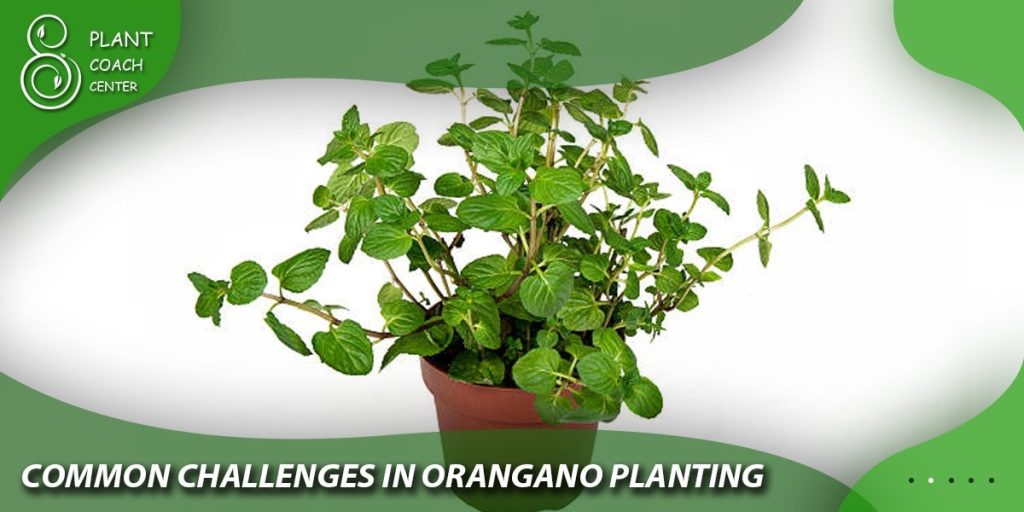
Common Pests and Diseases
Oregano is generally a hardy herb, but it can face certain pests and diseases. Common pests include aphids, spider mites, and thrips. Regularly inspect your plants for signs of infestation and take appropriate measures, such as using insecticidal soaps or organic pest control methods. Oregano can also be susceptible to fungal diseases like powdery mildew and root rot. Proper plant spacing, good air circulation, and avoiding overwatering can help prevent these issues.
Problematic Weather Conditions
Extreme weather conditions can affect oregano growth. Excessive heat or prolonged periods of drought can stress the plants, while heavy rainfall or waterlogged soil can lead to root rot. Protect your oregano during extreme weather by providing shade or shelter and adjusting watering practices accordingly.
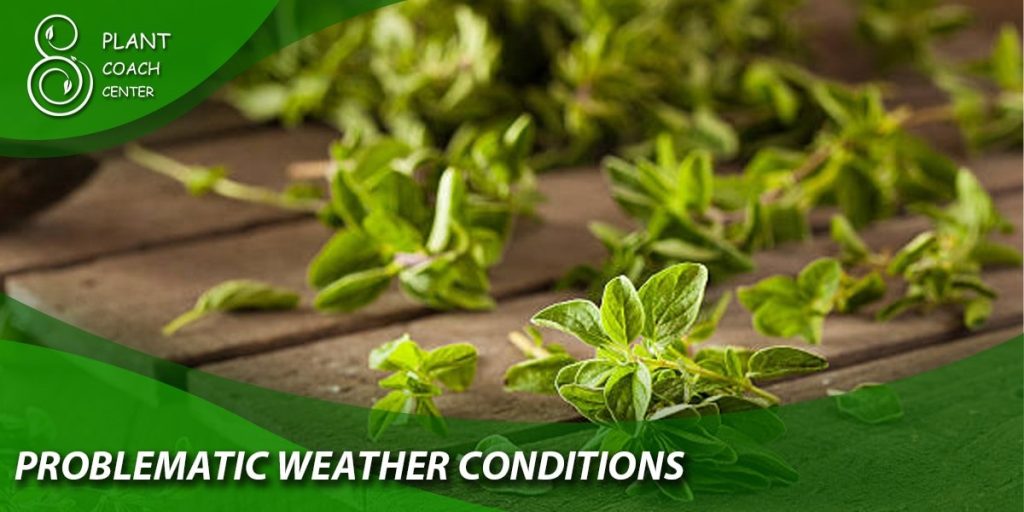
Overcoming Poor Soil Conditions
Oregano is adaptable and can tolerate a range of soil conditions. However, if you have poor soil, you can improve it by amending it with organic matter, such as compost or well-rotted manure. This will help improve soil structure, drainage, and nutrient content, promoting healthier plant growth.
Ongoing Care for Your Oregano
Routine Maintenance and Pruning
Regular maintenance is essential for healthy oregano plants. Remove any weeds around the plants to prevent competition for nutrients and water. Prune the plants regularly to encourage bushier growth and prevent them from becoming leggy. Harvesting the leaves regularly also promotes new growth and helps maintain the plant’s shape.
Harvesting Your Oregano
Oregano leaves can be harvested once the plant reaches a height of about 4 to 6 inches. Harvest just before the plant flowers, typically in mid to late summer, for the most potent flavor. Cut stems back to about a third, being careful not to remove more than half the stem. Use the harvested leaves fresh or dry them for later use.
Winter Care and Considerations
Oregano is a perennial herb, and with proper care, it can survive winter and regrow the following year. In colder regions, protect the plants from frost by covering them with mulch or moving potted plants indoors. Reduce watering during the dormant period, but ensure the soil doesn’t completely dry out.
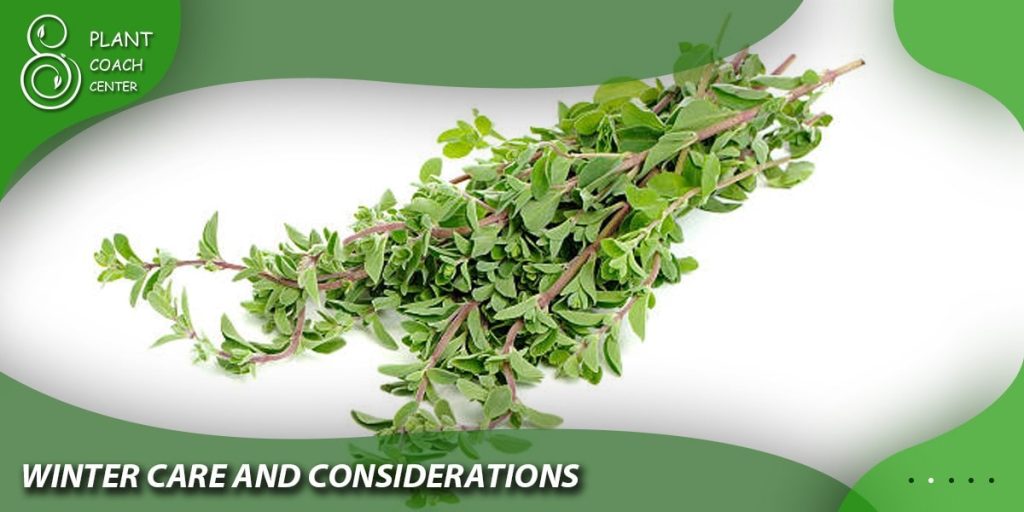
Conclusion
In conclusion, growing oregano can be a rewarding experience, providing you with a fresh and flavorful herb for your culinary adventures. By understanding the ideal planting times, providing proper care, and addressing common challenges, you can ensure the success of your oregano plants. Remember to harvest your oregano at the right time and enjoy its delightful aroma and taste in your favorite dishes.
For further information and resources on herb gardening, visit PlantCoachCenter.com, where you can find additional tips, guides, and inspiration for your gardening journey.
When is the best time to plant oregano?
The best time to plant oregano is in the spring when the soil has warmed up.
Can oregano be grown indoors?
Yes, oregano can be grown indoors under the right conditions, including adequate sunlight and proper watering.
What are some common problems when growing oregano?
Common problems include fungal diseases, pest infestations, and overwatering, which can lead to root rot.







